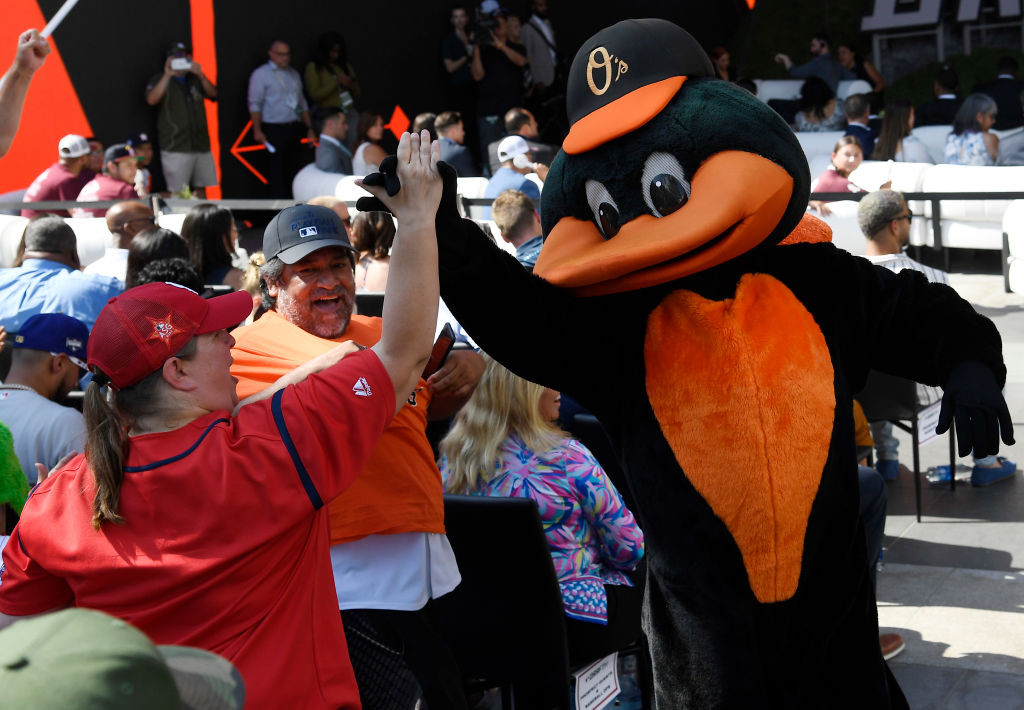TAMPA, Fla. - A few takeaways from the first night of the MLB Draft:
Jackson Holliday’s father, former major league outfielder Matt Holliday, knew about the selection 30 seconds ahead of the announcement because he received a call from Scott Boras.
I didn’t make the immediate connection. Boras used to represent Matt, and he negotiated his client’s seven-year, $120 million deal with the Cardinals back in 2010.
Of course, Boras would rep Jackson.
From the moment that the Orioles drafted Oregon State catcher Adley Rutschman one/one rather than prep shortstop Bobby Witt Jr. in 2019, they were destined to have their careers tracked side by side. It won’t be the same with Holliday and Druw Jones, who went second to the Diamondbacks, because they weren’t universally seen as the top two prospects in the class. But there will still be comparisons as they embark on their professional careers.
You probably could toss Termarr Johnson into the discussion, as well, since he plays Holliday’s position.
There was some industry buzz that the Orioles might pivot to Chipola (Fla.) Junior College third baseman Cam Collier, the son of former major leaguer Lou Collier. Baseball America ranked him as the No. 7 prospect in the draft class.
Collier wasn’t on the Orioles’ board, and he slipped to the Reds at No. 18.
Where do these rumors start?
Brooks Lee, the Cal Poly shortstop who was on the Orioles’ board, went eighth to the Twins. Remember how the oddsmakers made him the favorite over the weekend?
Hey, it’s your money. I won’t tell you how to spend it.
Executive vice president/general manager Mike Elias is flush with middle infield prospects. He isn’t worried about how the pieces will fit.
Shortstops are athletic and can move to other positions. They also can move to other organizations.
Trades become more probable with each selection. An infield only holds four players. There are only two positions up the middle. And don’t be so quick to hand over third base while Coby Mayo is in the organization.
Oh yeah, that guy.
The trick is not trading the best ones. You'll want to hold onto them.
The knock on the Orioles’ system is the lack of starting pitching depth. And they could attempt to trade for a proven veteran as they approach true contention. Not just this first-half wild card flirting stuff.
Elias has said that “there are myriad avenues for bringing those pitchers in,” and yes, he could take the trade route. It’s a strategy to stockpile talent and use it on your own roster or to package in deals.
Former executive Andy MacPhail talked about doing it many years ago, but the farm system couldn’t support his dream.
Elias hinted that the Orioles might select a pitcher as early as Competitive Balance Round A, and Orchard Lake St. Mary's right-hander Brock Porter, with his 70-grade fastball and all the talk that he could be the first arm chosen, remained on the board. It would have been the earliest that Elias grabbed a pitcher.
The Orioles took University of California outfielder Dylan Beavers, who was born to play at Oregon State.
Wonder if he even considered it?
Porter, the 2022 Gatorade National Baseball Player of the Year, was still available as the Orioles were on the clock in Competitive Balance Round B. They selected University of Florida outfielder Jud Fabian, thrilled to get him after the Red Sox beat them to the pick last year.
Fabian didn’t sign and returned to the Gators. He went from 40th overall to 67th.
Porter remains undrafted. Quite a drop.
Seems like the perfect overslot signing for a team that needs more pitching.
By accepting you will be accessing a service provided by a third-party external to https://www.masnsports.com/





